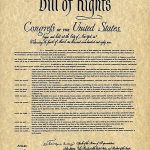
Real wages fell by 2.5 per cent in the three months to December, government statistics showed today, representing one of the largest drops since records began 20 years ago.
An average salary increase of 6.7 per cent translated to a real-terms pay cut once inflation was accounted for. The biggest income drop was for those working in the public sector, the Office for National Statistics (ONS) said, with average pay increases of only 4.2 per cent against 7.3 per cent in the private sector.
The ONS said that 17 per cent of adults were working more hours than usual because of the rising cost of living, while 4 per cent were working more than one job.
The decline in real wages came despite strong employment, with the overall jobless rate edging up only slightly to 3.7 per cent. Just over 100,000 jobs were created in December, the ONS said.
Ministers will also be satisfied to see that economic inactivity dropped by 0.3 percentage points, as younger people entered the workforce at the end of last year. The ONS said that there was a record flow of people coming back to work in the last half of the year, helping to boost labour force participation, which has lagged since the pandemic.
Darren Morgan, head of economic statistics at the ONS, said: “The last quarter of 2022 saw fewer people remaining outside the labour market altogether, with some moving straight back into a job and others starting to seek work again. This meant that although employment rose again, unemployment edged up also.”
Paul Nowak, general secretary of the Trades Union Congress, said the figures showed how family budgets had been “decimated by more than a decade of pay stagnation”. He added: “Instead of recognising the huge pressure households are under, the government is choosing to make millions poorer by holding down public servants’ pay.
“It is little surprise that workers are having to take strike action to defend their living standards. They have been pushed to breaking point.”
Jeremy Hunt, the chancellor, insisted that the way to increase real-terms pay was to continue to tackle inflation. “In tough times unemployment remaining close to record lows is an encouraging sign of resilience in our labour market,” he said. “The best thing we can do to make people’s wages go further is stick to our plan to halve inflation this year.”
Households are facing the worst two-year squeeze in real incomes since the Second World War. This decline in living standards is driven largely by high inflation, a rising tax burden on workers and higher borrowing costs pushing up mortgage payments.
Inflation has probably peaked and is forecast to fall sharply from the middle of this year to 4 per cent by December, according to projections by the Bank of England. The latest inflation data, released tomorrow, is expected to show annual consumer price growth fell back to 10.3 per cent in January, from 10.5 per cent in December. The Bank’s target is 2 per cent.
The Bank’s monetary policy committee has said that it will raise interest rates above the present 4 per cent if there are signs that wages are growing faster than expected. Despite falling real incomes, overall wage growth last year is at the highest on record outside the pandemic period, the ONS said. The committee fears that workers will continue to demand pay rises even as inflation falls back significantly later this year.
Matthew Percival, director for people and skills at the CBI, which represents 190,000 businesses, said that while there were “tentative signs” more people were looking to get back into work, there remained “very high vacancies and businesses are having difficulty filling them”.
“The upcoming budget [on March 15] is the opportune moment for the government to now make some real progress on the workforce shortages the economy is struggling with,” he said. “That requires action on a number of fronts, including expanding childcare, updating the shortage occupations list and widening the scope of employer health support as a non-taxable benefit to prevent and treat some of the key drivers of long-term absence.”
Read more:
UK wages fall by 2.5% as inflation bites





